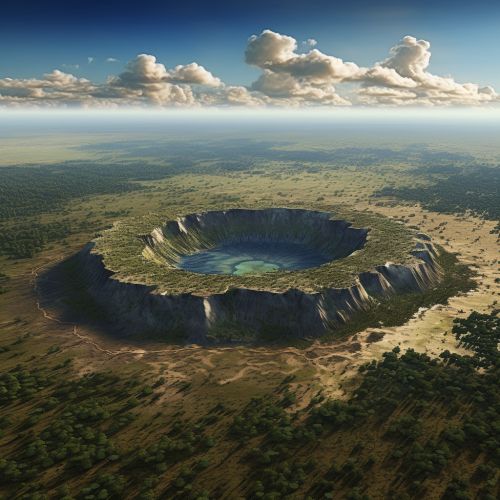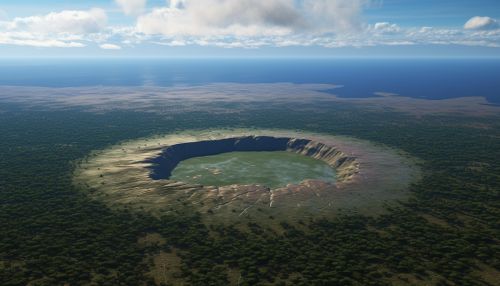Chicxulub Crater
Introduction
The Chicxulub Crater is a large impact structure, the center of which is located near the town of Chicxulub in the Mexican state of Yucatán. The crater is more than 180 kilometers in diameter and 20 kilometers in depth, making it one of the largest confirmed impact structures on Earth. The impact that formed the crater occurred approximately 66 million years ago, at the end of the Cretaceous period, and is widely accepted to have triggered a mass extinction event, known as the Cretaceous–Paleogene extinction event, which resulted in the extinction of most dinosaur species.


Discovery and Investigation
The existence of the Chicxulub Crater was first suggested by geophysicist Glen Penfield in the late 1970s, while he was working for the Mexican state-owned oil company Pemex. However, it was not until the late 1980s and early 1990s that the crater was extensively studied and its connection to the Cretaceous–Paleogene extinction event was established. The evidence for this connection includes a layer of sediment worldwide, known as the K–Pg boundary, which contains high levels of the rare-earth element iridium, which is more common in asteroids and comets than in the Earth's crust.
Impact Event
The impact event that created the Chicxulub Crater was a catastrophic event that had profound effects on the Earth's climate and biosphere. The asteroid or comet that caused the impact is estimated to have been between 11 and 81 kilometers in diameter. The energy released by the impact would have been equivalent to billions of atomic bombs, causing massive fires, tsunamis, and launching a large amount of debris into the atmosphere. This debris would have blocked sunlight, leading to a "nuclear winter" effect and causing a significant drop in global temperatures.
Effects on Life
The impact event that created the Chicxulub Crater is widely believed to have been a significant factor in the Cretaceous–Paleogene extinction event, which resulted in the extinction of approximately 75% of all species on Earth, including most dinosaurs. The "nuclear winter" effect caused by the impact would have led to a collapse of the global food chain, causing mass starvation and death among many species. However, some species were able to survive and adapt to the new conditions, leading to the evolution and diversification of many of the species that exist today.
Current Research
Research into the Chicxulub Crater and the impact event that created it continues to this day. Recent studies have focused on the recovery of life after the impact, the exact nature of the impactor, and the specific mechanisms by which the impact led to a mass extinction event. The Chicxulub Crater also serves as a valuable case study for understanding the potential effects of future asteroid impacts.
